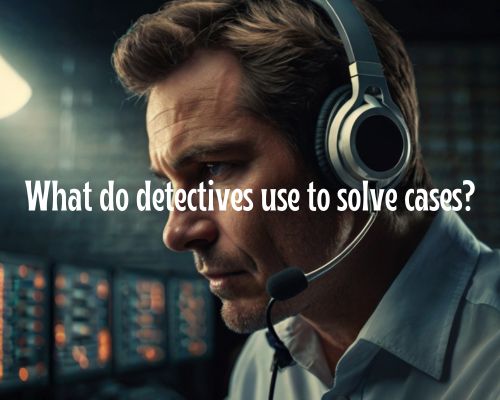Detectives like those in Ali Private Investigator Tampa, play a crucial role in solving crimes and ensuring justice within the realm of law enforcement.
They use a systematic approach to gather information from witnesses, victims, and available evidence at the crime scene.

This information is essential for creating a timeline of events and identifying potential suspects.
Analytical skills are also a critical asset for detectives.
They analyze gathered evidence to build a case and uncover the truth behind complex criminal activities.
Examining crime scenes, interviewing witnesses, and collaborating with other law enforcement agencies help them piece together crucial details that lead to solving cases.
Technology and specialized databases also aid detectives in their investigations.
By using digital surveillance systems, data management tools, and forensic techniques, detectives can track down leads, identify perpetrators, and present compelling cases for prosecution.
These tools and methods form the backbone of their work, enabling them to solve crimes efficiently and bring justice to victims.
Detective Work and Investigation Techniques
Detective work involves a systematic approach to solving crimes by focusing on crime scene details, scrutinizing evidence, and expertly conducting interviews and interrogations. Let us have more on these with Ali Private Investigator Tampa.
Understanding the Crime Scene
The crime scene is the starting point for any investigation.
As a detective, your primary task is to secure the area to prevent contamination.
You need to document everything meticulously through photographs, sketches, and notes.
Pay attention to details like the position of objects, potential points of entry and exit, and any visible evidence such as bloodstains or discarded items.
Logical problem-solving and critical thinking skills are essential to reconstruct the events that took place.
Collecting and Analyzing Evidence
Evidence collection is vital for building a case.
You must gather physical evidence such as fingerprints, DNA, and trace materials.
These items undergo forensic analysis, providing crucial links to suspects.
Always follow chain-of-custody procedures to ensure the integrity of the evidence.
Forensic science plays a significant role, with laboratories examining samples to uncover connections that might not be visible to the naked eye.
The analysis helps in intelligence gathering and narrows down potential suspects.
Interview and Interrogation Tactics
Effective interviewing and interrogation are pivotal in solving crimes.
You need to approach witnesses and suspects with attention to detail.
Ask open-ended questions to gather comprehensive information, and observe body language for non-verbal cues.
Interrogations require a balance of firmness and empathy.
Your objective is to extract truthful information while respecting the rights of the individual.
Consistent surveillance and collaborating with other law enforcement agencies enhance your ability to verify stories and uncover deeper connections in your investigation.
The Role of Law Enforcement and the Judicial Process
In solving cases, detectives play a crucial role within the broader framework of law enforcement and the judicial system.
Their contributions span from field investigations to court engagements, often involving collaboration with various agencies and presenting findings to ensure justice.
Duties and Responsibilities of Detectives
Detectives are tasked with gathering evidence and piecing together the details of a case.
They interview witnesses, victims, and suspects to build a comprehensive narrative. Precise documentation, including detailed reports, is essential.
They must also keep detailed records of their investigative activities, often maintaining a chain of custody for evidence.
Their goal is to identify perpetrators and ensure that all findings are legally admissible.
Collaboration with Other Law Enforcement Agencies
Detectives regularly work with other law enforcement agencies.
This collaboration can involve sharing information, resources, and expertise.
Inter-agency cooperation is vital when cases cross jurisdictions or require specialized skills.
Joint task forces may be formed for complex cases, such as organized crime or large-scale fraud.
This teamwork enhances public safety by pooling resources and knowledge, leading to more efficient and effective investigations.
Engagement with the Court System
Detectives play a significant role in the judicial system. They present their findings to prosecutors. They may also be called to testify in court.
Accurate and thorough reporting is critical. Their reports and testimonies can significantly impact the outcome of trials.
In cases involving serious crimes, detectives often work closely with the district attorney’s office to build a strong case. They may also engage with victims and families to ensure that all relevant information is captured and presented to the court.
Detectives’ multifaceted roles ensure the effectiveness of both law enforcement operations and the judicial process. Their rigorous investigative methods and collaborations form the backbone of criminal investigations. This leads to the resolution of cases and the maintenance of public order.


